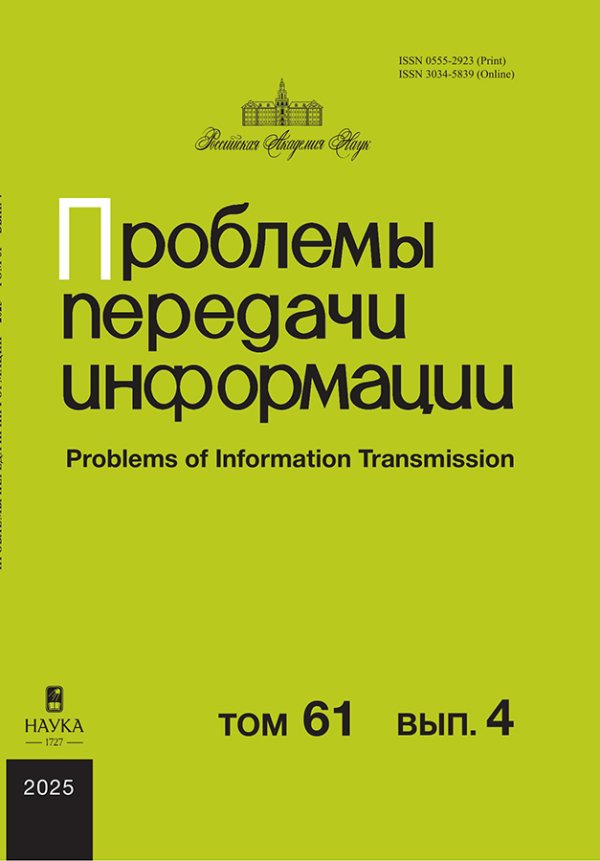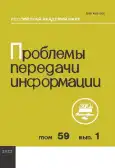Overparameterized maximum likelihood tests for detection of sparse vectors
- Authors: Golubev G.K1
-
Affiliations:
- Kharkevich Institute for Information Transmission Problems of the Russian Academy of Sciences
- Issue: Vol 59, No 1 (2023)
- Pages: 46-63
- Section: Articles
- URL: https://journals.rcsi.science/0555-2923/article/view/141987
- DOI: https://doi.org/10.31857/S0555292323010047
- EDN: https://elibrary.ru/RMHNYH
- ID: 141987
Cite item
Full Text
Abstract
About the authors
G. K Golubev
Kharkevich Institute for Information Transmission Problems of the Russian Academy of Sciences
Email: golubev.yuri@gmail.com
Moscow, Russia
References
- Zhang C., Bengio S., Hardt M., Recht B., Vinyals O. Understanding Deep Learning (Still) Requires Rethinking Generalization // Commun. ACM. 2021. V. 64. № 3. P. 107-115. https://doi.org/10.1145/3446776
- Belkin M. Fit without Fear: Remarkable Mathematical Phenomena of Deep Learning through the Prism of Interpolation // Acta Numer. 2021. V. 30. P. 203-248. https://doi.org/10.1017/S0962492921000039
- Belkin M., Hsu D., Xu J. Two Models of Double Descent for Weak Features // SIAM J. Math. Data Sci. 2020. V. 2. № 4. P. 1167-1180. https://doi.org/10.1137/20M1336072
- Dar Y., Muthukumar V., Baraniuk R.G. A Farewell to the Bias-Variance Tradeoff? An Overview of the Theory of Overparameterized Machine Learning, https://arxiv.org/abs/2109.02355 [stat.ML], 2021
- Добрушин Р.Л. Одна статистическая задача теории обнаружения сигнала на фоне шума в многоканальной системе, приводящая к устойчивым законам распределения // Теория вероятн. и ее примен. 1958. Т. 3. № 2. С. 173-185. https://www.mathnet.ru/rus/tvp4928
- Бурнашев М.В., Бегматов И.А. Об одной задаче обнаружения сигнала, приводящей к устойчивым распределениям // Теория вероятн. и ее примен. 1990. Т. 35. № 3. С. 557-560. https://www.mathnet.ru/rus/tvp1261
- Ingster Yu.I., Suslina I.A. Nonparametric Goodness-of-Fit Testing Under Gaussian Models // Lect. Notes Statist. V. 169. New York: Springer-Verlag, 2003. https://doi.org/10.1007/978-0-387-21580-8
- Bonferroni C.E. Teoria statistica delle classi e calcolo delle probabilità // Pubbl. del R. Ist. Super. di Sci. Econ. e Commer. di Firenze. V. 8. Firenze: Seeber, 1936
- Benjamini Y., Hochberg Y. Controlling the False Discovery Rate: A Practical and Powerful Approach to Multiple Testing //j. Roy. Statist. Soc. Ser. B. 1995. V. 57. № 1. P. 289-300. https://doi.org/10.1111/j.2517-6161.1995.tb02031.x
- Benjamini Y. Simultaneous and Selective Inference: Current Successes and Future Challenges // Biom. J. 2010. V. 52. № 6. P. 708-721. https://doi.org/10.1002/bimj.200900299
- Donoho D., Jin J. Higher Criticism Thresholding: Optimal Feature Selection When Useful Features are Rare and Weak // Proc. Natl. Acad. Sci. U.S.A. 2008. V. 105. № 39. P. 14790-14795. https://doi.org/10.1073/pnas.0807471105
- Anderson T.W. The Integral of a Symmetric Unimodal Function over a Symmetric Convex Set and Some Probability Inequalities // Proc. Amer. Math. Soc. 1955. V. 6. № 2. P. 170-176. https://doi.org/10.1090/S0002-9939-1955-0069229-1
- Ибрагимов И.А., Хасьминский Р.З. Асимптотическая теория оценивания. М.: Наука, 1 979
- Pyke R. Spacings // J. Roy. Statist. Soc. Ser. B. 1965. V. 27. № 3. P. 395-436; 37-449 (discussion). https://doi.org/10.1111/j.2517-6161.1965.tb00602.x; https://doi.org/10.1111/j.2517-6161.1965.tb00603.x
- Федорюк М.В. Асимптотика: интегралы и ряды. М.: Наука, 1987
Supplementary files










